If you are new to the world of cars and want to learn about the basics, this text suits you. Here you will learn about the history of the automobile.
Cars have been with humans for not many years but have advanced a lot. Now they are a part of our family, and our lives without them are challenging. What we see as a car today differs from its concept even a decade ago. Yet, advancement has always been a gradual process. Now, if you are interested in cars and want to learn more about their development, reading this article of Tech Trends on the history of cars is suggested to you.
Everything about the History of the Automobile; A Total Roller Coaster
Finding out who invented the car is a long story, and introducing a single person liable is not a simple task. If you rewind the development of vehicles past GPS, past antilock brakes and automatic transmissions, and even past the Model T, finally, you’ll get to the Benz Motor Car No. 1, the missing link between cars and horse-drawn buggies.
In automobile history, Karl Benz patented the three-wheeled Motor Car, known as the “Motorwagen,” in 1886, so one can say 1886 was when the first car was invented. In the evolution of the automobile, it was the first actual, modern automobile, meaning Benz is most often identified as the man who invented the car. Benz also patented his throttle system, spark plugs, gear shifters, water radiator, carburetor, and other fundamentals to the vehicle. Benz at last built a car company that still exists today as the Daimler Group, so the German leader is also the answer to the question of “what was the first car company?”
Early History of the Car
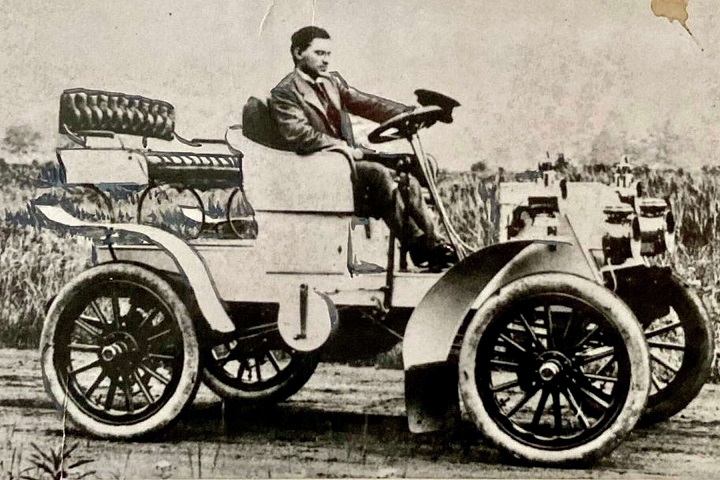
When it comes to the history of the automobile, Benz patented the first gasoline-powered car. Still, he wasn’t the original visionary of self-propelled vehicles. Some hints in the history of cars:
– Leonardo da Vinci had drawn a horseless, mechanized cart in the early 1500s. Like many of his designs, it wasn’t built in his lifetime. Nonetheless, a replica is displayed at the Chateau Clos Lucé, Leonardo’s last home and now a museum.
– Sailing chariots, moved by the wind, were being used in China when the first Westerners visited. In 1600, Simon Steven of Holland built one that carried 28 people. According to General Motors, he covered 39 miles (63 km) in two hours.
– Nicholas-Joseph Cugnot, a Frenchman, built a self-propelled vehicle with a steam engine in 1769. The cart, designed to move artillery pieces, moved at a walking pace (2 mph or 3.2 km/h) and had to stop every 20 minutes from building a new head of steam.
In automobile history, the word ‘car’ has meant various things at different times. At the end of the 19th Century, a car was a “streetcar,” i.e., a tram. Streetcars before that were ‘horse cars,’ which were omnibuses pulled by horses on rails. Then with the evolution of the automobile, the word ‘car’ turned into what was first named a ‘horseless carriage’ or possibly a motor car. The ‘automobile’, as they call it in America, was itself an import from the French. Now that you know when the first car was invented let’s check the evolution of internal combustion engines.
Internal Combustion Engines
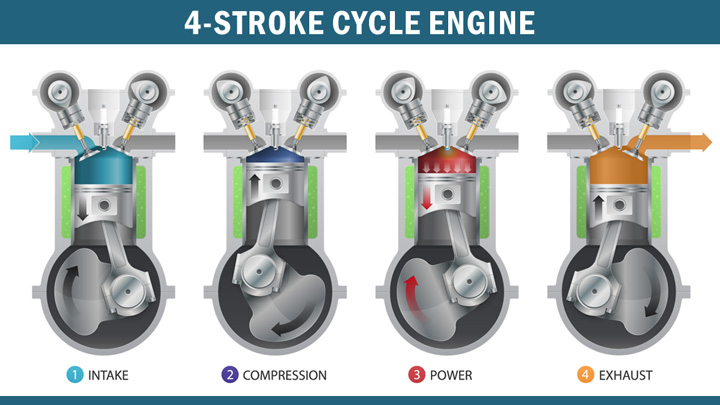
Essential to the modern car and even what was the first car company is the internal combustion engine. This type of motor utilizes explosive fuel combustion to move a piston within a cylinder. The piston’s movement rotates a crankshaft connected to the car’s wheels of a drive shaft. Like the history of the automobile itself, the internal combustion engine has gone a long way. An incomplete list of developments includes:
– 1680: Christiaan Huygens, famous for his contributions as an astronomer, designed but never built an internal combustion engine fueled by gunpowder.
– 1826: Samuel Brown modified a steam engine to burn gasoline and put it on a carriage. However, this proto-automobile never gained widespread adoption.
– 1858: Jean Joseph-Etienne Lenoir patented a double-acting, electric spark-ignition internal combustion motor powered by coal gas. He enhanced that engine to work with petroleum, attached it to a three-wheeled wagon, and traveled 50 miles.
– 1873: American engineer George Brayton created a two-stroke kerosene engine. It is known to be the first safe and practical oil engine.
– 1876: Nikolaus August Otto patented the first four-stroke engine in Germany.
– 1885: Gottlieb Daimler of Germany created the prototype of the modern gasoline engine.
– 1895: Rudolf Diesel, a French inventor, patented the diesel engine that was an efficient, compression ignition, internal combustion engine.
“We generally think of the 1886 Benz Patent-Motorwagen as the first proper car. Carl Benz built an entirely new vehicle around an internal combustion engine and used bicycle parts to do it. It was a motorized bicycle, so this is what makes the car interesting. Its innovation required lots of people to try different things and, although this seems obvious in retrospect, it wasn’t at the time,” said Standage.
History of Electric Cars
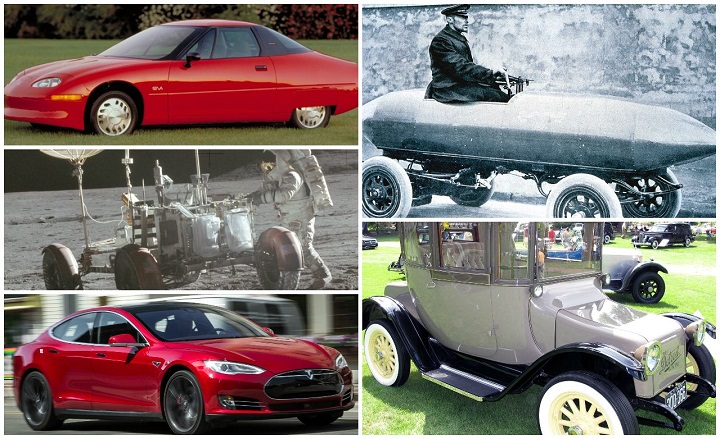
As an attractive page in the history of the automobile, electric cars were available in the middle of the 19th century. Still, they fell out of favor after Henry Ford presented his Model T, as per the U.S. Department of Energy. In recent years, electric cars have made a return, though. Around 535,000 electric vehicles were sold in the United States in 2021, according to CNBC. This advancement, like the internal combustion engine, also has a long story that is challenging to point to one inventor.
Two inventors are typically credited with independently inventing the first electric car: Robert Anderson, a Scottish inventor, and Thomas Davenport, an American inventor, in the 1830s, according to AutomoStory. The first rechargeable battery was invented in 1865 by Gaston Plante, a French physicist. He replaced the non-rechargeable batteries used in early models of the electric car. A few of the innovations the following include:
– Camille Faure, a French chemist, 1881 modified the lead-acid battery design by Plante to make electric vehicles a viable option for drivers.
– William Morrison of Des Moines, Iowa, was the first person who successfully built an electric car in the United States in 1891.
– Camille Jénatzy, a Belgian race car driver, built and raced an electric car, setting a new land speed record of 62 mph (100 km/h) in 1899. His car was called La Jamais Content (which means “the never satisfied”).
– Ferdinand Porsche, a German automotive engineer, invented the first hybrid car in 1900, according to the official Porsche website.
– Thomas Edison developed a nickel-alkaline battery in 1907 that was more durable and less dangerous than the lead-acid battery used in cars, according to Rutgers University. The storm didn’t take to most consumers since it had a higher initial cost. Still, it was used in the delivery trucks of several companies due to its durability and longer ranges.
Electric cars continued to become famous, and in 1895, the first car race in the United States — a 52-mile “dash” from Chicago to Waukegan and back, which took the winner 10 hours 23 minutes (average speed 5 mph / 8 km/h) — had six entries, and two of them were electric cars, according to Smithsonian magazine. By 1900, the New York City taxi service had 60 electric vehicles, and almost a third of cars in the United States were electric, according to the Department of Energy.
When Henry Ford presented the Model T in 1908, the inexpensive and high-quality gasoline-powered car became very popular, and the decline of electric cars began, according to the Department of Energy. By the 1920s, gasoline had become cheaper and more readily available, and more Americans were traveling greater distances. Electric cars didn’t have the range that gas-powered cars had, and electricity was still not readily available in many rural cities, making gasoline-powered cars the automobiles of choice.
“At the beginning of the 20th Century, electric cars were very briefly more popular than internal combustion engine cars in America. However, they had terrible batteries. Electric cars are only good today because of batteries that were initially developed for laptops and camcorders,” said Standage.
In 1976, Congress passed the Electric and Hybrid Vehicle Research, Development, and Demonstration Act due to rising oil prices, gasoline shortages, and dependencies on foreign oil. Many car companies started researching and designing new fuel-efficient and electric options, although not much happened until the 1990s.
In the history of the automobile, the Toyota Prius, developed and released in Japan in 1997, was the world’s first mass-produced hybrid car and was available around the world by 2000. The Honda Insight hybrid car was released in the United States in 1999.
Tesla Motors began developing and producing a luxury all-electric car that would travel more than two hundred miles on a single charge in 2003, with the first model released in 2008. The Chevrolet Volt, released in 2010, was the first available plug-in hybrid that used the gasoline engine to increase the range of the car when the battery was depleted. The Nissan LEAF was also presented in 2010. It was more readily available to the public than Tesla’s Model S. Today, nearly every famous and many smaller automobile companies are developing their own electric and hybrid models.
Karl Benz: Father of the Car Industry
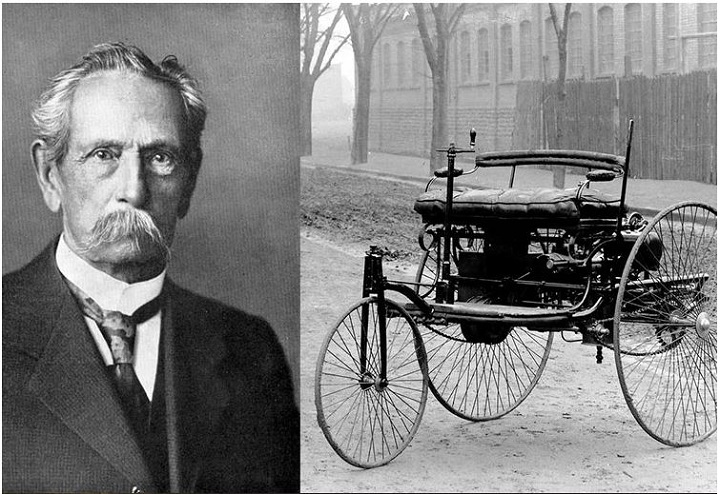
In the history of the automobile, Karl Benz gets the credit for inventing the car because his car was practical, used a gasoline-powered internal-combustion engine, and worked like modern cars do today.
Benz was born in 1844 in Karlsruhe, a city in southwest Germany. His father was a railway worker who died in an accident when Benz was 2 years old. Although poor, Benz’s mother supported him and his education. He was admitted to the University of Karlsruhe at age 15 and graduated in 1864 with a mechanical engineering degree.
Benz’s first venture of an iron foundry and sheet-metal workshop flopped. However, his new bride, Bertha Ringer, used her dowry to fund a new factory to build gas engines. With the profits, Benz was free to start building a horseless, gas-powered carriage.
He had built three prototypes of his Motor Car in private by 1888 when Bertha decided it was time for some press. Bertha took the latest model in the early morning and drove her two teenage sons 66 miles to her mother’s home. She had to improvise repairs along the way with shoe leather, a hairpin, and her garter. The successful trip showed his husband how to modify the car and demonstrated to a dubious public that cars were practical. Benz showed the Model 3 Motorwagen at the World’s Fair in Paris the following year.
Standage said, “This trip has been mythologized, but there is a kernel of truth to it. During this trip, Bertha figured out various things, such as that the brakes needed to be better and a better lower gear was required to get up hills. She stopped at a cobbler’s and had him put leather on the brake pads to improve them. Carl then adopted that approach. The fact that Bertha showed you could use this car for a road trip (she traveled 40 miles) gave Carl the confidence that he had a sellable product. People were amazed when he put it on sale at a trade fair. He started selling them and rights to other people around Europe so that they could manufacture them.”
Benz died in 1929, just two years after he merged with fellow car-maker Gottlieb Daimler’s company to form what is today the Daimler Group, manufacturer of the Mercedes-Benz.
Modern Cars’ Features
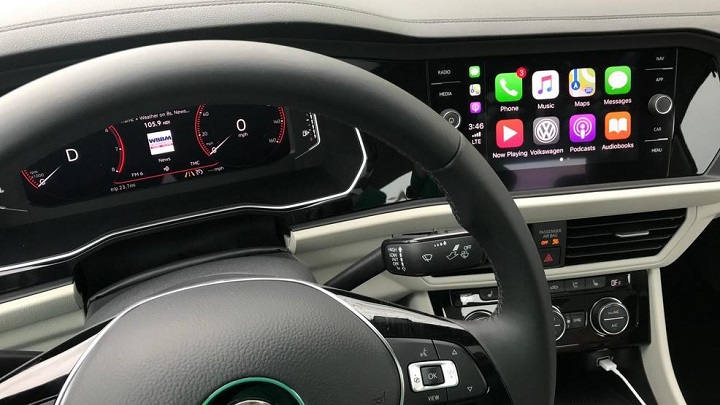
The above account of the history of the automobile brings us to modern-day cars with Bluetooth, hard drives, advanced safety systems, GPS, WiFi, and even the ability to parallel park themselves. It seems crazy, but it’s true. Now, cars come standard with highlights that were once a luxury (or didn’t even exist at all). In addition, driverless cars that once seemed like something out of a science fiction film are close to being a reality. It’s incredible to think how far cars have come and where the technology will go down the road.
Related articles:
– Most Beautiful Cars of All Time; Moving Masterpieces
.
Source: Tech Trends